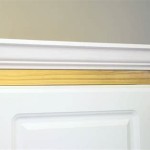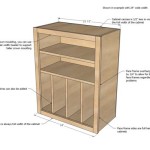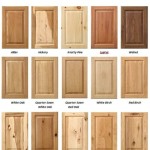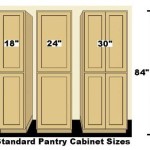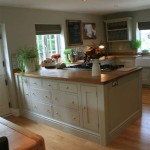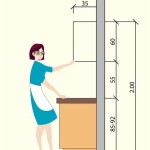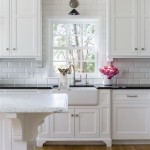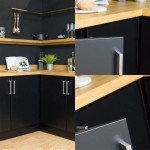Understanding Kitchen Cabinet Shelf Support Pegs: A Comprehensive Guide
Kitchen cabinets are a critical component of any functional kitchen, providing essential storage for cookware, dishes, and food items. The shelves within these cabinets allow for organized storage and efficient use of space. A critical, often overlooked, element in ensuring the proper functioning and longevity of these shelves is the shelf support peg. These small, unassuming pieces play a vital role in supporting the weight of the shelf contents and maintaining the structural integrity of the cabinet.
This article provides a comprehensive overview of kitchen cabinet shelf support pegs, examining their different types, materials, factors to consider when choosing them, proper installation methods, and best practices for maintenance. Understanding these aspects will enable informed decisions when installing, replacing, or upgrading the shelving system in one's kitchen cabinets.
Types of Kitchen Cabinet Shelf Support Pegs
The market offers a diverse range of shelf support pegs, each designed with specific features and functionalities to cater to different cabinet designs and weight-bearing requirements. Categorizing these pegs based on their design and material properties is essential for making the correct selection.
Metal Shelf Support Pegs: Metal pegs are characterized by their high strength and durability. They are typically constructed from steel, nickel-plated steel, or brass. Steel pegs offer excellent load-bearing capacity, making them suitable for supporting heavy items. Nickel-plated steel pegs provide additional corrosion resistance, extending their lifespan in environments with varying humidity levels. Brass pegs offer a decorative touch while providing adequate support.
Plastic Shelf Support Pegs: Plastic pegs are typically made from polypropylene or nylon. They are lightweight, cost-effective, and resistant to moisture. However, they generally have a lower load-bearing capacity compared to metal pegs. Plastic pegs are suitable for lighter loads, such as storing dishes or food containers. They are available in various colors, allowing for aesthetic coordination with the cabinet interiors. Nylon pegs offer improved strength and temperature resistance compared to polypropylene pegs.
Spoon-Shaped Shelf Support Pegs: Spoon-shaped pegs, often crafted from metal or plastic, feature a spoon-like extension that cradles the edge of the shelf. This design provides enhanced stability and prevents the shelf from tilting or slipping. Spoon-shaped pegs are particularly useful for shelves that are prone to movement or are made of lightweight materials.
Clip-Style Shelf Support Pegs: Clip-style pegs utilize a spring-loaded mechanism to grip the shelf securely. They are easy to install and remove, making them suitable for adjustable shelving systems. These pegs are commonly found in cabinets with pre-drilled holes at regular intervals, allowing for flexible shelf placement. The gripping action of the clip provides added stability and prevents accidental dislodgment of the shelf.
Adhesive Shelf Support Pegs: Adhesive pegs offer a tool-free installation option. They feature an adhesive backing that allows them to be attached directly to the cabinet interior. While convenient, adhesive pegs have a limited load-bearing capacity and are best suited for very light items. Adhesive pegs are often used in temporary shelving solutions or for adding extra support to existing shelves.
Locking Shelf Support Pegs: Locking pegs, also known as cam-lock pegs, provide a secure and stable shelf support mechanism. They lock into pre-drilled holes in the cabinet interior and prevent the shelf from moving or collapsing. These pegs are often used in high-end cabinetry and shelving systems, providing enhanced safety and reliability, especially with heavier items.
Factors to Consider When Choosing Shelf Support Pegs
Selecting the most appropriate shelf support pegs for kitchen cabinets necessitates considering several critical factors. These factors directly influence the peg’s performance, durability, and overall suitability for the intended application. Careful evaluation of these elements will prevent premature failure and ensure that the shelving system functions reliably over time.
Load-Bearing Capacity: This is arguably the most important factor to consider. The load-bearing capacity refers to the maximum weight each peg can safely support. Exceeding this limit increases the risk of peg failure, shelf collapse, and potential damage to the cabinet and its contents. When determining the required load-bearing capacity, consider the weight of the shelf itself, as well as the weight of the items that will be stored on it. Opt for pegs with a load-bearing capacity that significantly exceeds the expected weight, providing a safety margin and accounting for potential overloads.
Material Durability: The material from which the pegs are constructed directly impacts their durability and resistance to wear and tear. Metal pegs, particularly those made from steel or brass, are known for their high strength and longevity. Plastic pegs, while more economical, may be susceptible to cracking or deformation under heavy loads or fluctuating temperatures. Selecting a material that can withstand the environmental conditions within the kitchen, such as humidity and temperature variations, is crucial for long-term performance. Consider the potential for corrosion when selecting metal pegs, especially in areas prone to moisture exposure.
Peg Size and Compatibility: The size of the shelf support peg must be compatible with the pre-drilled holes in the cabinet interior. Using pegs that are too small will result in a loose fit, compromising stability and reducing load-bearing capacity. Conversely, pegs that are too large may damage the cabinet walls or be difficult to install. Before purchasing pegs, carefully measure the diameter of the existing holes and select pegs that match these dimensions. The depth of the peg should also be considered to ensure adequate support for the shelf.
Shelf Material and Thickness: The material and thickness of the shelf itself play a role in determining the type of support peg needed. Thicker shelves generally require stronger pegs to prevent sagging or bending. Shelves made from particle board or MDF (medium-density fiberboard) may benefit from pegs with a wider support surface to distribute the load more evenly. The shelf material's tendency to compress under load is another element to consider. Softer shelf materials may require pegs that provide a more secure grip or utilize locking mechanisms to prevent movement.
Aesthetic Considerations: While functionality is paramount, the aesthetic appearance of shelf support pegs should also be considered, particularly in cabinets with visible interiors. Pegs are available in various finishes, including chrome, brass, white, and black. Choosing pegs that complement the cabinet's style and color scheme can enhance the overall aesthetic appeal of the kitchen. For minimalist designs, consider using clear or inconspicuous pegs that blend seamlessly with the cabinet walls.
Proper Installation and Maintenance of Shelf Support Pegs
Even the highest-quality shelf support pegs will fail if installed incorrectly or subjected to improper maintenance. Ensuring proper installation techniques and adhering to regular maintenance practices are essential for maximizing the lifespan and performance of the shelving system. Following these guidelines will minimize the risk of shelf collapse, damage to the cabinets, and potential injuries.
Preparing the Cabinet: Before installing any shelf support pegs, thoroughly clean the cabinet interior to remove any dust, debris, or residue. This allows for a clean and secure fit. Inspect the pre-drilled holes for any obstructions or damage. If necessary, use a small drill bit to clear any debris from the holes. Ensure that the holes are properly aligned and evenly spaced to provide balanced support for the shelf.
Installing the Pegs: Depending on the type of peg, the installation process may vary slightly. For standard metal or plastic pegs, simply insert them into the pre-drilled holes. Ensure that the pegs are fully seated and flush with the cabinet wall. For clip-style pegs, compress the spring mechanism and insert the peg into the hole until it clicks into place. For adhesive pegs, carefully peel off the backing and press the peg firmly onto the cabinet wall, ensuring good contact. Allow the adhesive to cure for the recommended time before placing any weight on the shelf.
Shelf Placement and Weight Distribution: When placing the shelf onto the support pegs, ensure that it is level and evenly supported. Avoid placing excessive weight on one side of the shelf, as this can overload the pegs and cause them to fail. Distribute the weight of the items stored on the shelf evenly across the surface. Avoid concentrating heavy items in the center of the shelf, as this can cause sagging. If necessary, add additional support pegs to the center of the shelf to provide extra reinforcement.
Regular Inspection and Maintenance: Periodically inspect the shelf support pegs for any signs of wear, damage, or loosening. Check for cracks, deformation, or corrosion. If any issues are detected, replace the affected pegs immediately. Clean the pegs regularly with a soft cloth to remove any dust or debris. Avoid using harsh chemicals or abrasive cleaners, as these can damage the peg material. Tighten any loose screws or fasteners to ensure that the pegs are securely attached to the cabinet walls. If adhesive pegs become loose, reapply adhesive or replace them with stronger pegs.
Addressing Sagging Shelves: Over time, shelves may begin to sag due to excessive weight or improper support. To address sagging shelves, consider replacing the existing pegs with stronger ones that have a higher load-bearing capacity. Alternatively, add additional support pegs to the center of the shelf to provide extra reinforcement. In extreme cases, it may be necessary to replace the shelf with a thicker and more rigid material. Adding a vertical support in the center of the shelf can also help to prevent sagging.

20pcs 6mm Shelf Support Peg Metal Pin Cleats Pegs For Kitchen Cabinet Shelves Silver Fruugo No

12 Pcs Shelf Support Pegs For Shelves Strong Adhesive Kitchen Cabinet Book Closet Brackets Clapboard Layer Com

Shelf Supports Stud Plug In Pins Pegs 5mm Hole Kitchen Cabinet Shelving Cupboard

Nisko Metal Kitchen Cabinet Shelf Pegs Support Pins China Glass Made In Com

Plug In Kitchen Cabinet Shelf Pegs 5mm 150kg

Shelf Support Peg Cabinet Pins Clear Plastic Temu

Shelf Supports Pegs Pins Plugs Stud In 5mm Hole Size Kitchen Cupboard Cabinets

Shelf Support Peg 6mm L Cabinet Bracket With Pin For Kitchen Furniture Book Shelve Silver Tone 50pcs Com

Shelf Support Peg 5 Millimeters Cabinet Pins Clear Plastic Replacement Supports For Kitchen Furniture Book Shelves Holder Locking Temu Italy

8pcs Punch Free Shelf Support Pegs Self Adhesive Bracket Pins No Drill Cabinet Clips Holders Double Row Reinforced Partition Shelves For Kitchen Bookshelf Closet Yahoo Ping
Related Posts

